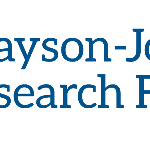“To control our destiny”: Advocates make case for “Pimlico Plus”
First of two parts. Next, examining some of the many questions around this plan.
“We have a once in a lifetime opportunity here,” Alan Foreman admonished members of the Maryland Thoroughbred Horsemen’s Association Thursday. “This will not present itself again. And we can’t let the perfect get in the way of the good.”
“This” is the vision outlined by the Maryland Thoroughbred Racetrack Operating Authority, of which Foreman, who is also the MTHA’s general counsel, is a member. It was presented to the General Assembly Jan. 5, and the legislative action required by some elements of it could take place in the current session, which began Jan. 10 and runs to April 8.
The plan, dubbed Pimlico Plus, is nothing short of a complete reimagining of Thoroughbred racing in Maryland. While it was spurred by the dismal condition of the state’s two main racetracks, Laurel Park and Pimlico Race Course, where it ends is someplace different altogether: the shuttering of one of the two tracks, the creation of a new training center, and the end of private ownership of the tracks, replaced instead by state ownership coupled with nonprofit management.
“There are a lot of skeptics,” Foreman acknowledged. “Some of the critics have already come out very quickly without letting us continue to do our work.”
There are, and not without reason: there remain many unanswered questions and much work to do before this plan becomes a reality. As always, the devil may be in the details. More on all of that in a follow-up to this piece.
But the case for the plan is clear, too.
“The overarching pitch is that we have a once in a lifetime opportunity. And we also have the ability to control our destiny,” Foreman said in an interview. “Those are the two takeaways that I get. The status quo for Maryland racing will not work. And we will not survive if we don’t, in my opinion, if we don’t take advantage of this opportunity.”
Start with the status quo.
The situation with the racetracks is already well known. Suffice to say that various reports have made clear that the future will require the demolition of virtually every structure on both properties.
Equally troubling is the state of the business itself. The Stronach Group, owners of the Maryland Jockey Club, told the Authority that it has been more than $95 million in the red operating day-to-day racing in the last decade. What’s more, it has spent another $69 million on capital expenditures without making much of a dent in the needs of its two tracks. Even the Preakness, long Maryland racing’s cash cow, has been a money-loser the last two years.
Stronach Group executives have said publicly and privately that the sea of red ink, at least as it pertains to day-to-day racing, is a problem not of cost control but of revenue generation. Outside analysts tend to agree.
It’s unclear whether there’s much chance of that picture changing dramatically. Unaddressed in either the Authority’s plan or the supporting consultants’ reports is a realistic analysis of how Maryland might become more competitive in the racing wagering marketplace.
CHECK OUT THE LATEST OFF TO THE RACES RADIO!
What seems clear is this: slot machines and alternative gaming, which have provided a lifeline for many other tracks around the country, including nearby competitors like Parx Racing, Delaware Park, and Charles Town Races, are extremely unlikely to appear at Maryland tracks.
That means that, from an operator perspective, the tracks will need to sink or swim on their own revenue streams. The Stronach Group has suggested that could be feasible – with a much shorter racing season and a shift of slots or parimutuel revenue away from the horsemen and breeders and towards the track operator.
But that’s not attractive to the state’s racing stakeholders, who prefer a year-round schedule that maximizes racing opportunities. It also keeps purses at a level that is very competitive versus other Mid-Atlantic tracks – but is below top tier tracks in New York and Kentucky.
“Without gaming, to me, it’s always been unlikely that a private operator would be able to come in and run Maryland racing without doing what the Stronachs want to do,” Foreman said. “And that is cut racing days in half and shift the revenues that are coming from ancillary revenue, separate and apart from wagering, over to them.”
If changing the current situation – crumbling racetracks and an ownership model unattractive to virtually all private operators – is one ingredient that’s attractive to horsemen, the ability to control their own destiny is another.
The state’s horsemen and breeders are scheduled to transfer close to $12 million to the MJC in 2024 as part of the extension of the so-called 10-year agreement. That model – in which the state’s horsemen and breeders, who receive slot machine subsidies the track does not, pay to indemnify the track against losses the year-round racing schedule incurs on them – has brought relative peace to the state’s Thoroughbred industry.
But it has also brought grousing among many in the industry, who believe the tracks could be better run. And it has done little to change the overall picture; the losses have continued unabated, while the condition of the physical plants has worsened.
The PImlico Plus plan gives the industry a chance to start with a clean slate – and to chart its own future.
“The reality is, there’s been so much instability over the last five years,” said trainer Tim Keefe, who is president of the MTHA and trains for several Maryland breeders. “I think if nothing else, that certainly helps to give everybody a little bit of a clearer picture of what the avenue or the path is going to look like moving forward for racing here in the state. I think that’s the biggest takeaway is it looks like it’s going to give us the stability.”
So far, people around racing and elsewhere seem bullish. The Baltimore Sun earlier in the week gave the plan a thumbs-up. Gov. Wes Moore called it “an important next step for the industry,” and Stronach Group chairwoman Belinda Stronach echoed that language, tabbing it “an important first step in… reinvigorating Thoroughbred racing in Maryland.”
George Mahoney, the new chairman of the Maryland Racing Commission, who also served as the Commission’s non-voting representative on the Authority, said in an interview he was “very excited the partnership that is going to take place,” adding, “I think that it’s going to not only be exciting for everybody in the horse world and everybody concerned about the economics within the horse industry within the state of Maryland, but it’s also going to be exciting for the city of Baltimore.”
COMING NEXT: Questions abound about this plan. We’ll examine some of them.
LATEST NEWS















A lot of issues to iron out. That 12 million dollar payment by MTHA in 2024 should be contingent on the Stronach group also transferring the Preakness and Black Eyed Susan trademarks to the MTHA and a non compete clause for the Preakness going forward. Or an equity interest in Laurel Park.
Excellent article